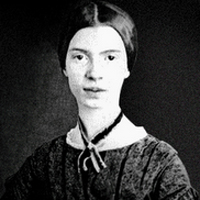After Great Pain a Formal Feeling Comes by Emily Dickinson: Summary and Critical Analysis
The poem After Great Pain, a Formal Feeling comes from Emily Dickinson is acclaimed as the greatest piece on pain and death, and which marks the highest measure of excellence in its artistic achievement. While it underlines the broad theme of pain and misery as the inevitable part of human existence, lie compares implicitly "the after effects of pain to the slow numbing process of freezing to death".

Emily Dickinson (1830-1886)
The poem is in three well-defined and yet organically cohesive stages with their intricate patterning of structure, images and ideas. In the first stanza, the funeral motif is emphasized through the images of tombs and ceremony. In the second stage, the hard and solid images of "wood", "quartz" and "stone" symbolize the benumbed consciousness. In the third stage the leaden image of benumbed consciousness has given place to the image of frozenness and desolation. The unifying force behind all these apparently diversified images is the sense of pain, a shock or a trauma. Thus, the poem is the greatest poem on pain.
The poetess describes the fragile emotional equilibrium that settles heavily over a survivor of recent trauma or profound grief. It is Dickinson’s most popular poem about suffering. The pain must be psychological, for there is no real damage to the body and no pursuit of healing. The “formal feeling” suggests the protagonist’s withdrawal from the World, a withdrawal which implies a criticism of those who have made her to suffer. A funeral goes on inside her, with the nerves acting both as mourners and as a tombstone.
After the great pain, the heart feels so dead and alienated from itself that is wondering whether it is really the one that suffered, and also if the crushing blow came recently or centuries earlier. She feels that even time has dissolved. In the second stanza, the protagonist walks in a circle as an expression of frustration because she has nowhere to go. The poem dramatizes a state of emotional shock that serves as a protection against pain. “Quartz contentment” is one of Emily Dickson most brilliant metaphors, combing heaviness, density and earthiness with the idea of contentment. Dickinson has been very successful in arousing the sense of numbness of body and mind, followed by a great pain. Legs move mechanically. This denotes that all human behavior becomes mechanical. There is no sensation, no acuteness of feeling. “Go round” further strengthens the idea of numbness. There is no change or the desire to change Legs move in circle mechanically. It means life has lost its ambition or fails to attempt to achieve its ambition. “Go round, or Air, or ought” suggests that life becomes aimless and careless. “A wooden-way” is a transferred epithet. This has been used to indicate that life is not independent. It is dependent on others without caring its own success and development. “A quartz contentment, live stone” is a beautiful expression of artificial life and false situation. The simile like ‘stone’ shows how after a great pain man’s desires are killed or destroyed seeking no change.
In the last stanza the poetess recollects that the time of great pain has been over and the image that is left impressed upon her mind is that of “freezing persons recollecting the snow.” The expression is very beautiful and gives a realistic of the feelings followed by severe pain. “Freezing Man” who in the beginning felt ‘Chill’ has reached the state of stupor by shunning all the sensations and is now collecting snow. Thus the freezing man collecting snow suggests that the time of pain is now over and man has become sensation less like lead and the past has become just a memory. “The hour of lead” here is another brilliant metaphor, in which time sense and body fuse into something heavy, dull, immovable object. This figure of speech implies that such protection requires a terrible sacrifice. Such suffering may prove total, but if it does not, it will make the victim ever remember the painful process. The last line is particularly effective in its combination of shock, the growing intensity of pain and final relief. The frequent heavy pauses within the lines and the mixture of slant and full rhymes all contribute to the poem’s formal slowness. The poem reads heavy and slow due to its improvisational nature.
Cite this Page!
Shrestha, Roma. "After Great Pain a Formal Feeling Comes by Emily Dickinson: Summary and Critical Analysis." BachelorandMaster, 9 Nov. 2013, bachelorandmaster.com/britishandamericanpoetry/after-great-pain.html.
Related Topics
Much Madness is Divinest Sense: Analysis
Renunciation: Summary and Analysis
Because I could not Stop for Death: Analysis
I Heard a Fly Buzz: Summary and Analysis
Success is Counted Sweetest: Summary and Analysis
I taste a liquor never brewed: Summary and Analysis
A Bird came down the Walk: Summary and Analysis
Hope is the Thing with Feathers: Analysis
I like to see it lap the Miles: Summary and Analysis
I had something that I called mine: Analysis
If I should Die: Summary and Analysis
I'm Nobody! Who are you?: Summary and Analysis
These are the days when the Birds come back
What Inn is this: Summary and Analysis
Exultation is the going: Summary and Analysis
Of Bronze-and Blaze: Summary and Analysis
A Clock Stopped: Summary and Analysis
I felt a Funeral, in my Brain: Summary and Analysis
Safe in their Alabaster Chambers: Analysis
There's a certain Slant of light: Summary and Analysis
To fight aloud, is very brave: Summary and Analysis
I like a look of Agony: Summary and Analysis
Bring me the sunset in a cup: Summary and Analysis
The day came slow-till Five o'clock: Analysis
 |
bachelorandmaster.com |